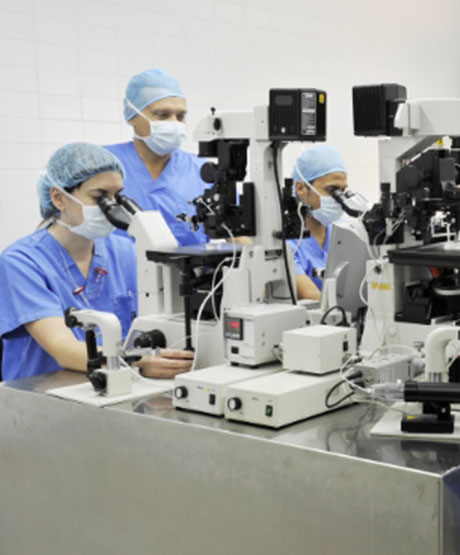
Seminal lavage: what is it and what is it used for?
Human immunodeficiency virus (HIV), hepatitis C (HCV) and hepatitis B (HBV) are viruses that are transmitted through blood and body fluids as well as through vertical transmission (from the mother to the foetus). As a result, couples wishing to get pregnant in which one partner is a carrier of a virus are faced with the question of whether or not it is possible to do so without the other partner getting infected. If the male partner has one of these viruses and his female partner does not (serodiscordant couples), assisted reproduction technology (ART) can be used in order to avoid transmission.
Techniques that enable men who have one of these viruses to father children are performed on a daily basis at Instituto Bernabeu without contagion of the partner or offspring. The technique is known as seminal lavage.
Seminal lavage is based on the premise that the viruses in question are present in semen and not in the spermatozoon per se. By separating them from the rest of the semen (seminal plasma and other cells), the technique enables only spermatozoa to be used, thus minimising the risk of transmission of the virus to the female partner and from her to the foetus.
In order for the technique to be performed, the male partner must deposit a sample of semen at the laboratory. It is then assessed based on World Health Organization criteria (volume, spermatozoa concentration, mobility, morphology, etc.). Following this, the spermatozoa with the best mobility are divided off from the rest of the semen and made to travel through a column of fluids of varying densities (the density gradient technique). Last of all, the sample with the most mobile sperm is split into two parts:
- Using a molecular biology technique known as PCR, one part is used to confirm that the virus is not present. The technique amplifies the genetic material in the virus (if it is present) making it possible to detect it.
- The remaining quantity is frozen until the results of the PCR are obtained. If the results confirm that the virus is not present, the sample can be used in ART, whether this is artificial insemination (as long as the quality of the sample permits) or in vitro fertilisation (IVF).
Having completed all the seminal lavage processes, a high percentage of cases produce samples that are free of the virus and pregnancies avoiding contagion of both the mother and child can be achieved.
Nuria Ruiz, Biologist at Instituto Bernabeu
